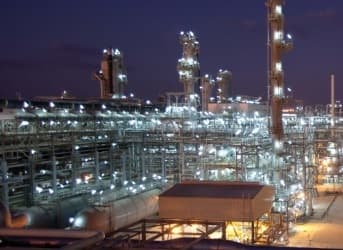Last week I wrote about the emerging investor language of “Carbon Asset Risk” and ExxonMobil’s agreement to publish its plans to deal with the risk of potentially “stranded” assets in a carbon-constrained future. Exxon’s answer arrived Monday with the publication of “Energy and Carbon—Managing the Risks,” a report that outlines the corporation’s views on the risks climate change pose to its assets and the future of its business model.
In short, Exxon is not too concerned.
The report makes clear that Exxon does not believe the world will meet the emissions reduction targets required to limit global warming to below 2°C above pre-industrial levels. It goes on to say that all long-term investments are based on its global outlook for energy, which has explicitly factored in potential future emissions regulation. The report concludes that, “based on this analysis, we are confident that none of our hydrocarbon reserves are now or will become ‘stranded.’”
Related Article: Exxon Eyes Production at 10 New Projects
This is because Exxon believes that the “low carbon scenario”—the one that sees an 80 percent reduction in global emissions by 2050 and a stabilization of CO2 in the atmosphere at 450 ppm—is unlikely. It goes as far as saying that not only is it unlikely, but that it is undesirable as the “damaging impact to accessible, reliable and affordable energy resulting from the policy changes such a scenario would produce are beyond those that societies, especially the world’s poorest and most vulnerable, would be willing to bear.” Furthermore, this scenario would require CO2 prices to rise above $200 per ton by 2050, which the report juxtaposes against the current EU price of $8-$10 per ton.

One of the key concerns behind the carbon asset risk movement was the hundreds of billions of dollars being spent on exploration to buttress reserves that may never be used. However, even under the “450 Scenario” the world would still consume significant volumes of liquid hydrocarbon fuels. As the chart below shows, if firms stop investing in exploration and production maintenance, supply will fall sharply below demand.
Related Article: Geopolitical Turmoil Takes its Toll on ExxonMobil

By this logic, it is clear why Exxon doesn’t seem to worry about the future value of its assets. It has a secure future demand base, even if the environmental community pulls off a miracle and manages an 80 percent emissions reduction by 2050.
A corporation the size of Exxon, with annual revenues exceeding the gross domestic product of 167 countries, has considered every possible threat to its business model, climate change included. This is likely why the turn-around time on Exxon’s response to the carbon asset risk proposal was so short—they already knew their answer.
By Rory Johnston of Oilprice.com


















